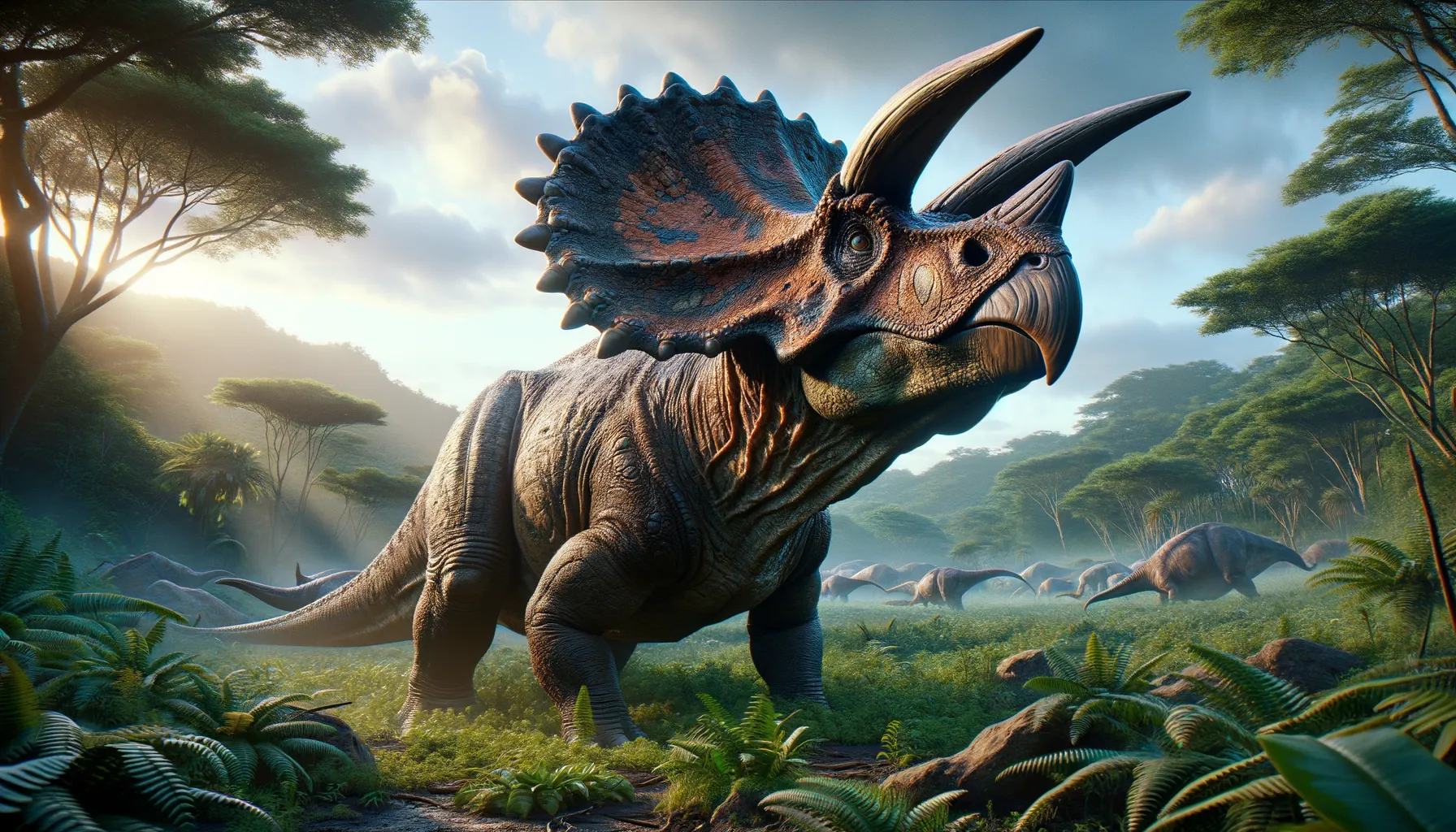
Platyceratops
The Earthy Behemoth of Asia's Past.
Period
Cretaceous
Length
Roughly 20 feet long.
Height
Around 6 feet at the shoulders.
Weight
Approximately 1.5 tons.
Platyceratops was a ceratopsian dinosaur that roamed the Earth during the Late Cretaceous period. Known for its flattened frill and sizeable body, it was a herbivore relying on the abundant plant life of its time for sustenance. Its social behavior suggests it may have moved in herds, providing protection against predators. Fossils of this intriguing dinosaur have mostly been discovered in Asia, revealing much about its ancient lifestyle.
Diet
Platyceratops was a herbivore, feeding primarily on ferns, cycads, and other low-lying plant life. Its beak-like mouth helped shear through tough vegetation, allowing it to thrive in its environment.
Hunting
Being a herbivore, Platyceratops did not engage in hunting behavior. It spent much of its time grazing, moving slowly through its habitat in search of abundant plant life.
Environmental challenges
During its time, Platyceratops faced environmental challenges such as fluctuating climates and competition for resources. Predators posed a constant threat, but the herd behavior likely provided some level of defense. Additionally, the changing landscapes due to volcanic activity and shifting sea levels required adaptability for survival.
Speed
Slow-moving due to its bulk.
Lifespan
Estimated around 70-80 years.
First discovery
Found in Mongolia in 2003.
Fun Facts
- Platyceratops was a dinosaur from the Late Cretaceous period, approximately 70 million years ago.
- The name Platyceratops means 'flat horned face', referring to its flat, broad skull.
- Platyceratops belonged to a group of dinosaurs known as ceratopsians, famous for their frills and horns.
- Fossils of Platyceratops have been found in what is now Mongolia, showing they lived in Asia.
- Compared to other ceratopsians, Platyceratops had a less pronounced frill and smaller horns.
- Platyceratops were herbivores, feeding on plants that grew in their Late Cretaceous environments.
- The discovery of Platyceratops helped scientists understand dinosaur diversity in Asia during the Late Cretaceous.
Growth and Development
Platyceratops likely experienced rapid growth during its early years to reach a size that offered safety from many predators. As with many ceratopsians, it underwent a stage of development where its frill grew more pronounced, serving roles in both protection and mating displays. Its life cycle involved gradual maturity over several decades.
Habitat
Platyceratops inhabited regions that now make up modern-day Mongolia, favoring floodplains and areas rich in diverse plant life. These environments were ideal due to the abundance of food available throughout the year. Forests and open areas provided a natural balance between food availability and protection.
Interaction with other species
This dinosaur showed signs of social behavior, moving in herds which provided protection and aided in finding food resources. It coexisted with other herbivorous and carnivorous dinosaurs. Interactions with carnivores varied, with some predator-prey relationships while other dinosaurs posed no threat.
Natural lifespan
In the wild, Platyceratops could live between 70 and 80 years.
Reproduction
Platyceratops likely reproduced seasonally, laying clutches of eggs in nests built on the ground. The young may have been cared for by parents or the herd to some extent, allowing higher survival rates for offspring. Little is known about the exact nature of its courtship rituals, though frill displays may have played a role.
Social behaviour
This dinosaur likely exhibited strong social bonds within herds, which not only provided protection but also facilitated shared care of young. Communication could have involved visual displays and possibly sonic calls. Social structure helped in efficiently locating food and avoiding predators.
Fossil locations
Fossils of Platyceratops have primarily been discovered in Mongolia, offering significant insights into its structure and lifestyle. These finds have been crucial in understanding both its ecological role and its relationships with other contemporary dinosaurs. The locations of these fossils suggest varied habitats across the ancient landscapes of Asia.
